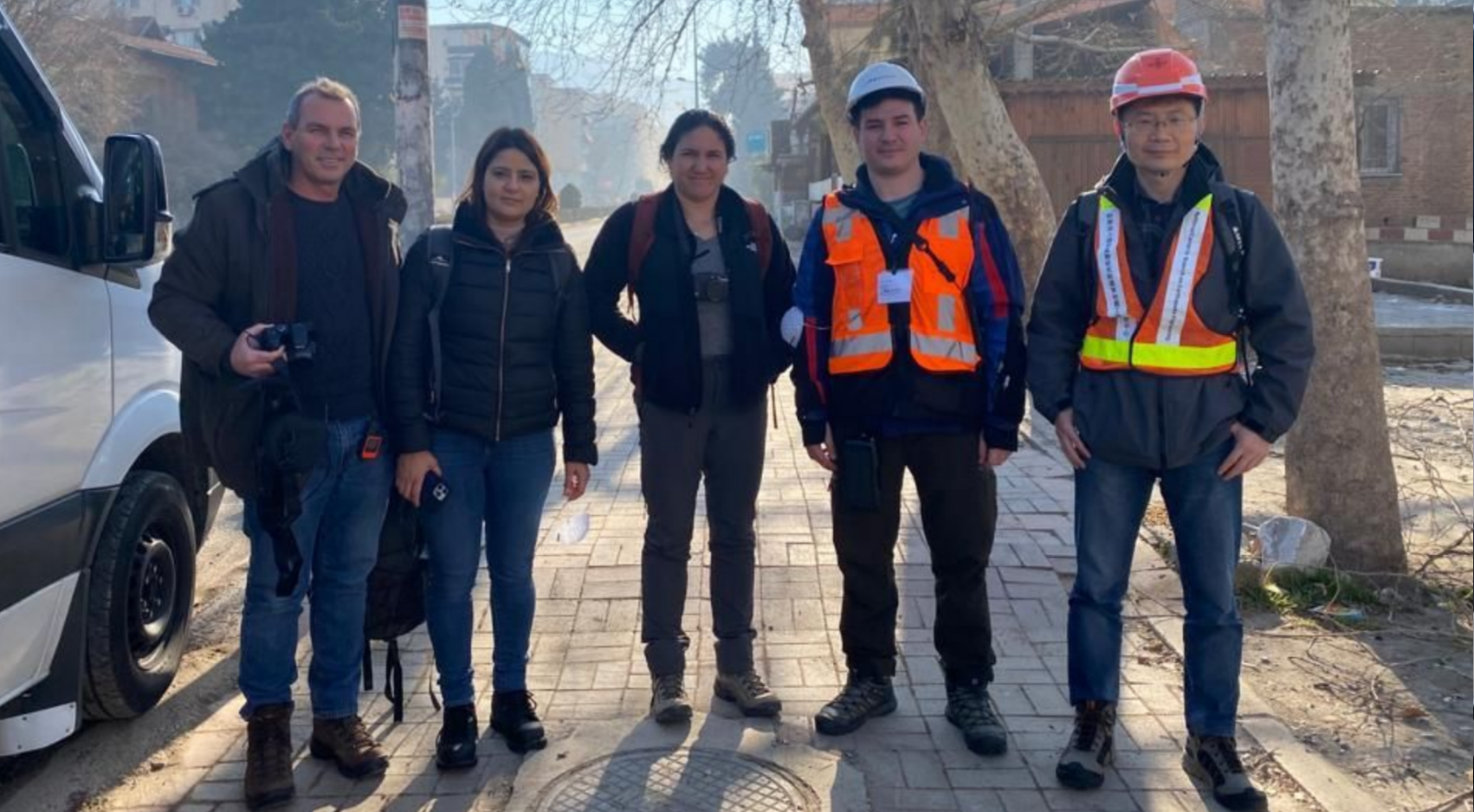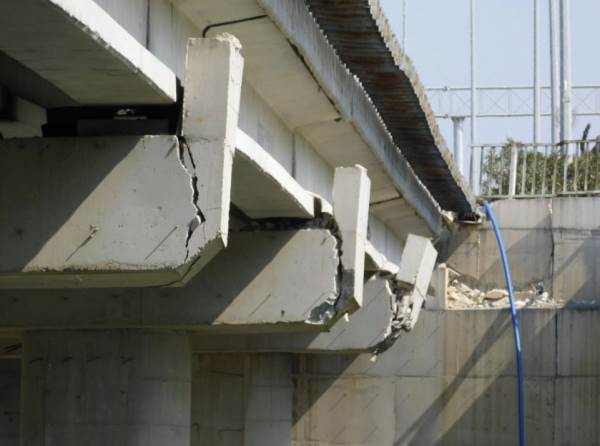SDSU Professor Among First to Assess Structural Damage of Bridges Following Turkey Earthquake
Structural engineering professor Robert Dowell went to Turkey two weeks after Februarys devastating back-to-back earthquakes to conduct reconnaissance of bridge damage.

On Feb. 6, a 7.8 magnitude earthquake struck southern Turkey, followed nine hours later by a 7.5 magnitude earthquake on another fault line. The worst earthquake disaster in Turkey’s history killed at least 50,000 and the widespread devastation left millions without shelter.
San Diego State University structural engineering professor Robert Dowell was part of a team that sprung into action within two weeks, heading to Adana in southern Turkey to assess and examine damaged and failed structures, including affected bridges. Dowell brought over 30 years of experience in bridge engineering and a Ph.D. in seismic bridge behavior to the team.
The team spent six days traveling to the most damaged, affected cities and regions, returning to their base in Adana each evening.
“Professor Dowell was one of the first field engineers doing reconnaissance (a term used in civil engineering to describe preliminary structural engineering surveying) … and he released one of the very preliminary field observations on the bridges,” said Gloria Faraone, Dowell’s colleague and fellow structural engineering professor at SDSU.
Travel and Findings
While out for dinner after their first day of field visits on Feb. 20, the team experienced a magnitude 6.3 aftershock, the largest of thousands of aftershocks. During that trembler, Dowell saw “pure terror” on the faces of all the restaurant staff, he said, and everyone ran outdoors. Dowell returned to his hotel later and noticed that many were unwilling to go back inside.
The team discovered that although tens of thousands of buildings had collapsed, bridges remained intact. While some bridges had heavy damage, “not a single bridge collapsed,” said Dowell.
“Turkey’s bridges are designed to a higher standard than their buildings,” he explained. “They're designed to be damaged from a major earthquake, but not collapse.”
Dowell said these higher design and construction standards are due to bridges being primarily contracted under public funding. Residential buildings, which are often constructed through private funding, are not as likely to have such high safety and structurally sound standards.
A concept called base isolation would provide additional protection for buildings, he said.
“Imagine putting a building on ice,” explained Dowell. “The building needs a base that’s not physically connected to the ground so that the structure can sit relatively still during an earthquake as the ground shifts violently back and forth below it, and only drifts slowly left and right.” The few base-isolated buildings in the affected areas that the team is aware of did not collapse and had no damage.
Lessons for California
Like Turkey, California faces a threat from “strike-slip” earthquakes, where one tectonic plate slides to one side of the fault and the other side slides the other way, releasing the stored potential strain energy along the fault line.
While California works to prepare for and mitigate major damage from a future “Big One,” Dowell said the state can learn much from the experience of the structurally sound bridges of Turkey.
Modern state-sponsored bridges in California were designed and built with similarly high standards to those in Turkey, and older California bridges were seismically retrofitted to make them safe, even in the event of a large earthquake. “Though it is expensive, it does ensure safety,” said Dowell. As in Turkey, the design philosophy is to allow significant damage but no collapse from a major earthquake.
Next Directions
Though Dowell’s preliminary results have garnered lots of praise and attention, he’s not done.
Dowell is working on multiple journal papers and articles with his findings on the damage to Turkey’s bridges, including an advanced and detailed structural analysis based on the construction plans for one of the bridges in his survey.
This is the most advanced type of structural analysis possible, allowing for the changing response of the structure over time as damage occurs while the earthquake continues. “The hope is that we can understand, through this analysis, how and why the extreme and unusual damage occurred.”
He also plans to present a report at the annual meeting of the Seismic Committee of the American Association of State Highway and Transportation Officials.
And in a conference scheduled before the earthquake, Faraone and Dowell are returning to Istanbul, Turkey, this summer for a presentation on earthquakes and bridge columns that will be tested soon in their laboratory at SDSU.

PHOTO ABOVE: Failed exterior shear keys in Bridge 2, one of the bridges Dowell’s team examined. (Credit/Robert Dowell)
About SDSU College of Engineering: The college delivers a broad-spectrum, world-class engineering education, combined with practical research experience. All departments in the College are in the Top 25 for generating engineering workforce in the US. The College now occupies six buildings across campus with expansion planned in the newly acquired Mission Valley campus. In the last six years, over 60% of the faculty are new hires and research award dollars have tripled. The college has earned 9 NSF CAREER Awards in the last two years. SDSU Engineering is dedicated to innovative education, discovery, and dissemination of knowledge.



